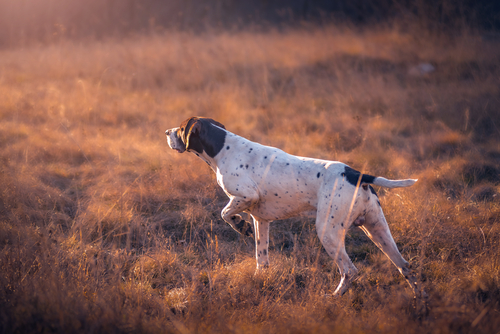Every dog has the natural urge to chase to a certain degree. The descendants of wolves, dogs enjoy the predatory pastimes of stalking, sneaking, pouncing, and shaking. For specialized hunting breeds like Airedales, German Pointers, and Beagles, however, this prey drive can be expected to be dialed up quite high. Rather than training hounds with the goal to entirely redirect their wolf-like hunting instinct, the people who have historically bred hunting dogs have instead valued dogs who combined these powerful instincts with impressive self-control and obedience.
Did you know that properly trained hunting dogs can significantly increase the success rate of hunts? In fact, studies have shown that well-trained hunting dogs can increase the number of game retrieved by over 60%. Training your hunting dog is not only essential for optimal performance and efficiency but also for their safety and the overall enjoyment of the hunting experience.
If you are the proud owner of a hunting dog, you’re no doubt keenly aware of your dog’s powerful chase instincts! No squirrel, gopher, rabbit, cat, bird, or leaf floating on the breeze will rest easy when your watchful pup is near. The catch, of course, is that this hunting drive isn’t so fun when you’re at the dog park, out for walks around the block, or when your mail carrier is near.
If not controlled through proper training, your furry companion’s desire to take off running after exciting objects (read: literally anything that moves) puts your dog’s safety at risk, endangers wildlife and domestic animals, and puts your safety at risk every time you’re nearly yanked off your feet.
It’s important to keep in mind, though, that your dog’s prey drive is a healthy, natural instinct that displays his excellent breeding. If you approach his behaviors as negative or deliberate acts of rebellion, your dog won’t realize his potential to be a proud ambassador of his breed.
Rather, by properly harnessing and redirecting your dog’s hunting instincts, you’ll
- improve his self-esteem,
- expand his enjoyment of life,
- and open doors for your dog to experience fun environments that would otherwise be too dangerous to explore.
Here are a few practical tips for training a dog with a high prey drive.
1. Reduce or eliminate his exposure to trigger objects and animals.
This means avoiding dog parks, walking near small animals, and opportunities for your dog to be unsupervised outdoors—even in his own backyard. The sheer thrill your dog will experience by satisfying his predatory chase drive in any of these situations will create a powerful positive association.
Training your dog NOT to satisfy this urge once he’s learned how incredible it feels to give chase on his own is a lot more work. Don’t be discouraged if your dog has already made this association over and over; it’s still possible to retrain a hunting dog, but you shouldn’t delay proper training any longer.
2. Train your dog in a controlled environment.
Whether you choose your living room, an empty lawn, or a professional setting like All Dogs Unleashed, it’s vital that your training environment be controlled and calm. It will be impossible to begin to train your dog unless you’re guaranteed to be able to catch and hold his attention over and over.
3. Focus on redirection and preventive training.
Since it would be impossible (and of course undesirable) to train your hunting dog not to experience the urge to chase, your training should focus on redirection and preventive training.
You will not be able to get your dog to break off a chase midway, so your job will be to learn your dog’s triggers and catch it immediately when he’s even slightly engaged. A prick of the ears, a lift of the head, a shift in the haunches; there will be cues mere moments before he succumbs to his impulses.
Use commands paired with high-value treats to capture and keep your dog’s attention. Your dog should be left thinking that it will always be far more rewarding to look at you and listen to your commands than to take off after moving objects.
Remember, dogs need us to teach them how to work through challenging situations. Your goal is training your dog to stop immediately and look at you for direction every time he feels that healthy hunting urge.
Commands you will teach, reinforce, and refine include:
- Watch Me
- Leave It
- Come (or other recall command)
- Sit
- Down
- Wait
- Stay
4. Keep your dog leashed until he displays perfect recall.
Until your hunting dog is impeccably trained, he’s got to stay leashed and clipped to you. You cannot risk losing control of him and allowing him to experience that urge of unbridled chase.
5. Create positive opportunities for your dog to satisfy his prey drive.
Once you have completed your dog’s basic obedience training—usually around one year of age—he’s ready to begin taking fun and exciting classes that will create opportunities for him to satisfy his primal, wolf-like urges in healthy ways!
These experiences will increase your dog’s enjoyment of life, reinforce the connection between you as dog and handler, and prevent negative—and even dangerous—behaviors that could otherwise occur as the result of boredom and frustration.
Choosing the Right Hunting Dog Breed
When it comes to training a hunting dog, selecting the right breed is crucial for success. Different breeds excel in specific types of hunting, so it’s important to choose a breed that aligns with your hunting preferences and lifestyle. Popular hunting dog breeds that you may consider include Labrador Retrievers, German Shorthaired Pointers, Golden Retrievers, and English Springer Spaniels.
Researching the characteristics of various hunting dog breeds is essential in finding the best fit for your needs. Every breed has its unique qualities, such as size, energy level, trainability, and temperament. By considering these factors, you can determine which breed is the most suitable for your hunting style and preferences.
For example, if you enjoy upland game hunting, a breed with a keen sense of smell and strong retrieving abilities, like the Labrador Retriever, may be an excellent choice. On the other hand, if you prefer waterfowl hunting, a breed with a waterproof coat and a passion for swimming, such as the Golden Retriever, could be a great fit.
Choosing the right hunting dog breed is the first step to building a successful hunting team. By selecting a breed that matches your needs and preferences, you can ensure a smoother training process and maximize your hunting dog’s potential.
Tips for Training Your Hunting Dog
When it comes to training a hunting dog, starting from a young age is crucial for establishing good habits and building a strong foundation. Here are some essential tips to help you in your training journey:
- Use positive reinforcement techniques: Motivate and encourage your dog during training sessions by using praise, treats, and rewards. This positive approach helps your dog associate training with a positive experience, making them more eager to learn.
- Expose your dog to hunting environments: Gradually introduce your dog to different hunting environments, sounds, and scenarios. This exposure helps them remain calm and focused during actual hunts, preventing distractions and improving their hunting skills.
- Maintain consistency: Stick to a regular training schedule and reinforce commands consistently. Dogs thrive on routine, and consistent training helps them understand what is expected of them and reinforces their learning.
- Practice obedience training in various settings: Dogs need to respond reliably to commands in different situations and distractions. Practice obedience training in different settings, such as in the park or during walks, to ensure your dog follows commands regardless of the environment.
- Seek professional guidance if needed: If you encounter challenges or feel overwhelmed during the training process, don’t hesitate to seek professional help. A professional trainer can provide valuable guidance and techniques to overcome specific training obstacles.
- Remember that training is ongoing: Training your hunting dog is not a one-time event. It requires continuous practice and reinforcement to maintain and improve their skills. Make training a regular part of your routine to ensure your dog stays sharp and reliable.
- Prioritize your dog’s safety: Use appropriate hunting gear, such as a buoyant vest, and ensure your dog’s comfort and safety while training. Also, provide proper nutrition, hydration, and regular veterinary care to keep your dog healthy and in optimal condition.
- Build a strong bond with your hunting dog: Quality time spent together outside of training sessions is essential for building a strong bond with your dog. Engage in activities that your dog enjoys, such as playing and going for walks, to strengthen your connection and enhance the training experience.



